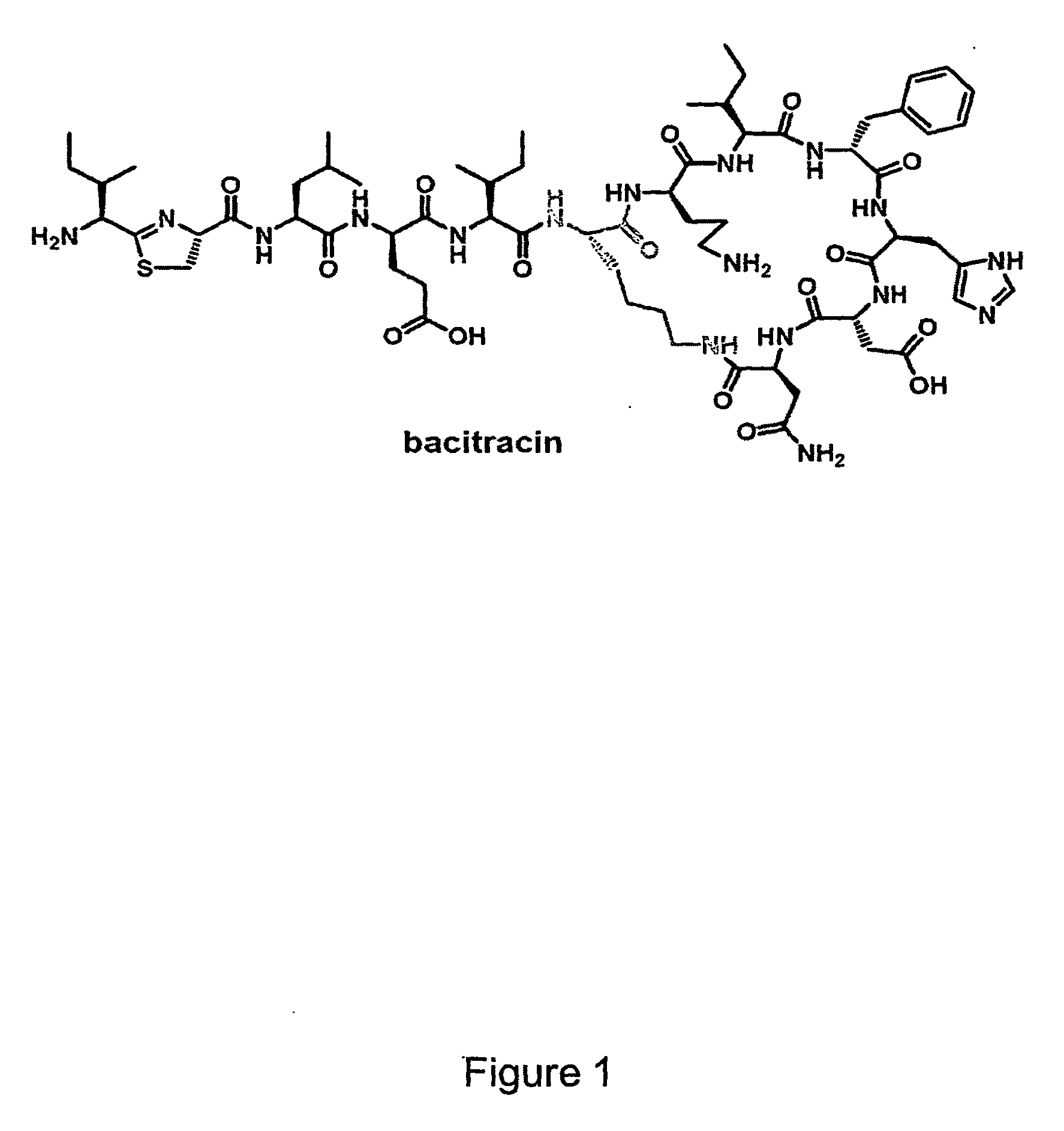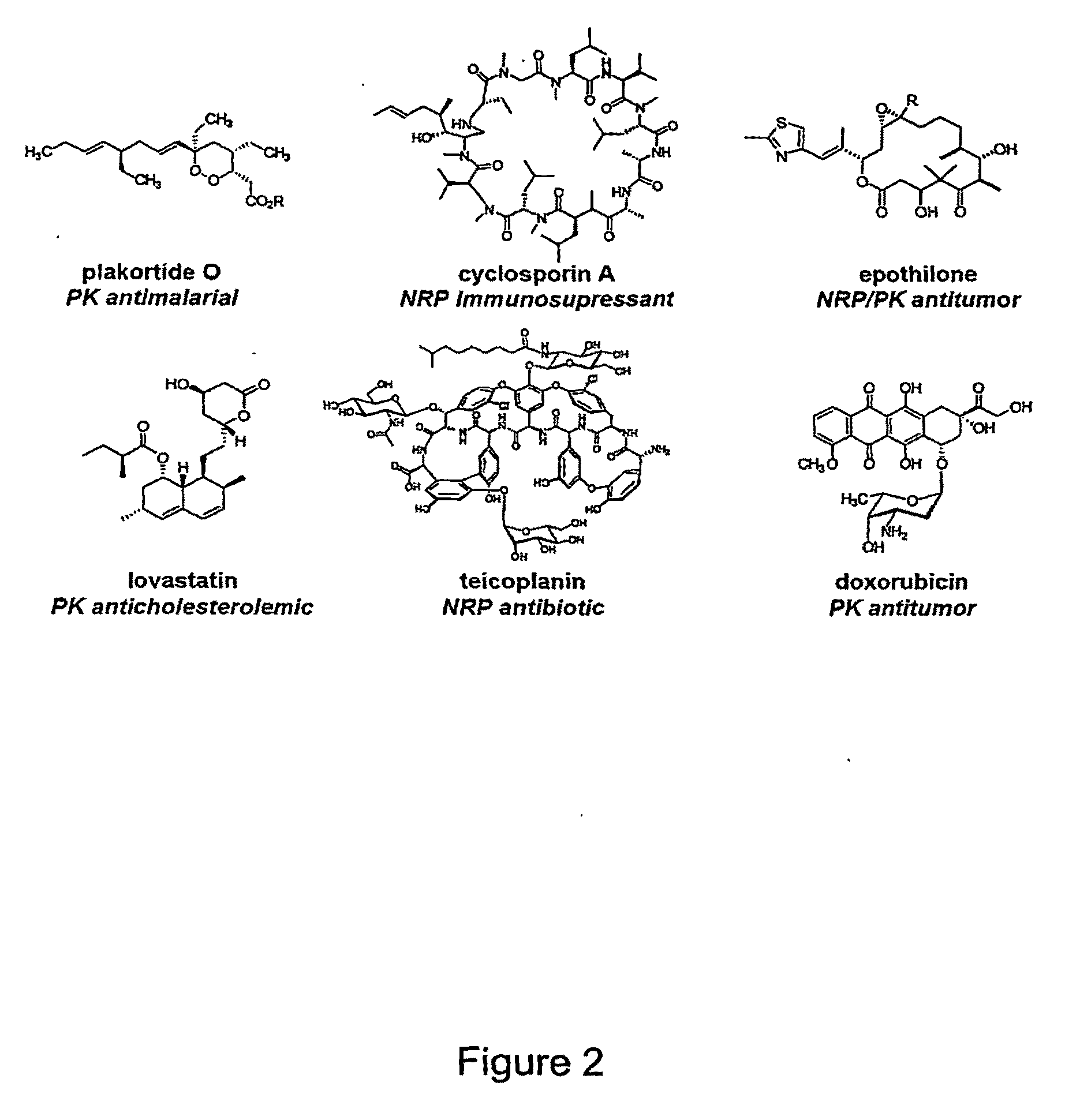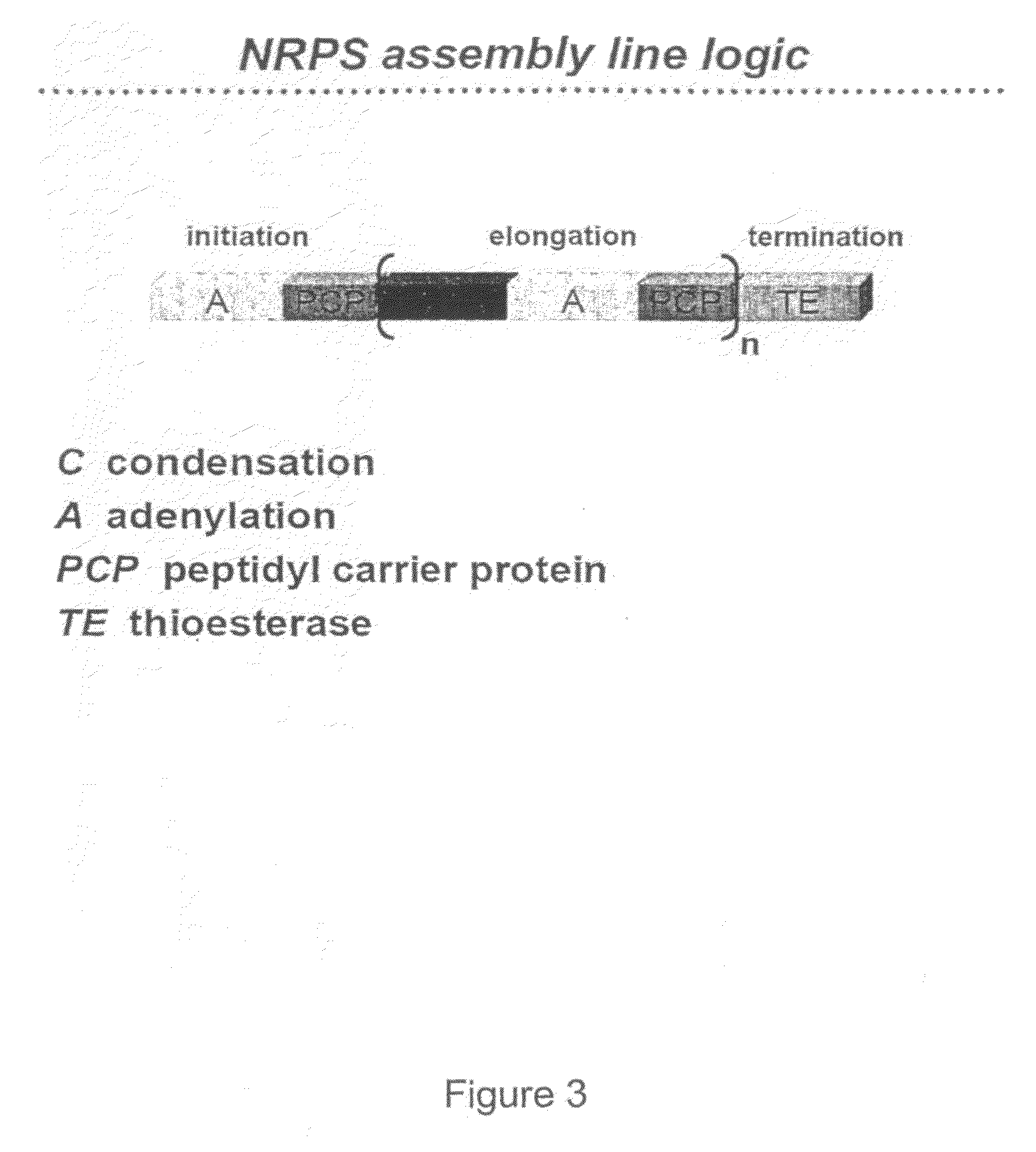Methods of Producing Modified Assembly Lines and Related Compositions
a technology of assembly lines and compositions, applied in the direction of biochemistry apparatus and processes, microorganisms, nucleotide libraries, etc., can solve the problems of difficult access to synthetically, laborious synthetic routes, and rare success
- Summary
- Abstract
- Description
- Claims
- Application Information
AI Technical Summary
Problems solved by technology
Method used
Image
Examples
example 1
Creation of a MAL for Enterobactin Synthesis
The Enterobactin Assembly Line
[0101]Enterobactin is a small, iron-chelating molecule known as a siderophore (FIG. 12). Siderophores are produced by bacteria (e.g., E. coli) and fungi. In E. coli, enterobactin is synthesized by enterobactin synthetase assembly line, components of which are produced by a single gene cluster (FIG. 13; Crosa et al., Iron Transport in Bacteria (2004) ASM Press; Crosa and Walsh, Microbiol Mol Biol Rev (2002) 66, 223; Schubert et al., J Bacteriol (1999) 181, 6387). EntA-EntF catalyze the synthesis of enterobactin from chorismate and serine; EntS and FepA-G are involved in import and export functions; Fes is involved in the release of Fe3+ into the bacterial cytoplasm. The assembly line that produces enterobactin comprises an initiation module, a single elongation module, and a termination module (FIG. 14). The initiation module comprises two domains, each on a separate polypeptide: EntE (the A domain for 2,3-dihy...
example 2
Alterations to the Bacillomycin Assembly Line
[0106]The bacillomycin gene cluster comprises bmyA, bmyB, bmyC, and bmyD (FIG. 39). BmyD is a single AT domain of the initiation module. BmyA contains the remainder of the initiation module and elongation modules; BmyB contains elongation modules; and BmyC contains elongation modules plus the termination TE domain. (FIG. 40). Bacillomycin D activity can be tested by utilizing a screen where the producer Bacillus amyololiquefaciens FZB42 is spread onto a plate containing the fungus Fusarium oxysporum (FIG. 41). Modified assembly lines are generated by replacing the ASer domain in BmyC with an AAsn domain. This substitution is expected to result in no product being made by the assembly line. By instead substituting mutated AAsn domains into the BmyC gene and selecting for variants with activity in a bacillomycin screen, active variants of the modified assembly line can be identified, where these active, modified assembly lines replace the S...
example 3
Mapping Protein-Protein Interactions in the Enterobactin Synthetase
[0107]As described above, the enterobactin synthetase assembly line comprises EntB, EntD, EntE, and EntF. Interactions between EntB and the other proteins (EntD, EntE, and EntF) are known to occur (FIG. 44). To assess these interactions, a technique known as “shotgun alanine scanning,” a method known in the art, and described in Weiss et al. ((2000) Proc Natl Acad Sci USA 97, 8950) can be employed. Briefly, this technique allows combinatorial changes at specified residues between WT and alanine (or, for some codons, other amino acids as well). As shown (FIG. 45), this technique allows for rapid assessment of WT→Ala mutations at multiple positions, and has been used to evaluate and identify epitopes in proteins including hGH and EnHD important in specific interactions. To study EntB, shotgun alanine scanning was performed at residues 246, 247, 249, 250, 253, 254, 256, 257, and 258 (FIG. 46) to generate a library with ...
PUM
| Property | Measurement | Unit |
|---|---|---|
| molecular mass | aaaaa | aaaaa |
| molecular mass | aaaaa | aaaaa |
| pH | aaaaa | aaaaa |
Abstract
Description
Claims
Application Information
 Login to View More
Login to View More - R&D
- Intellectual Property
- Life Sciences
- Materials
- Tech Scout
- Unparalleled Data Quality
- Higher Quality Content
- 60% Fewer Hallucinations
Browse by: Latest US Patents, China's latest patents, Technical Efficacy Thesaurus, Application Domain, Technology Topic, Popular Technical Reports.
© 2025 PatSnap. All rights reserved.Legal|Privacy policy|Modern Slavery Act Transparency Statement|Sitemap|About US| Contact US: help@patsnap.com



